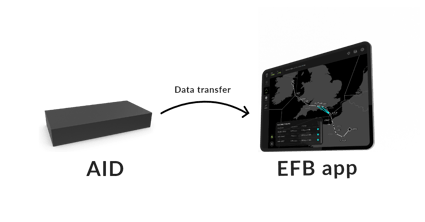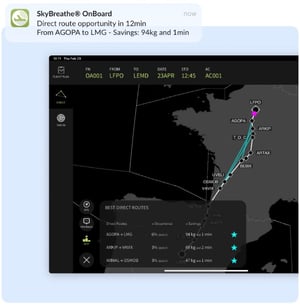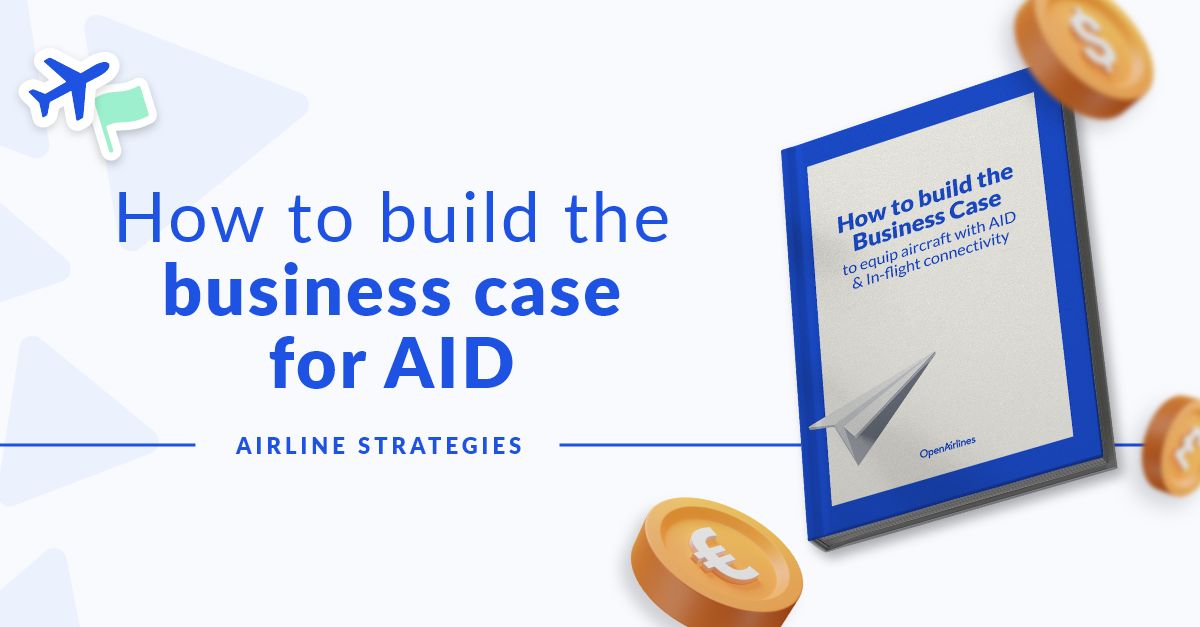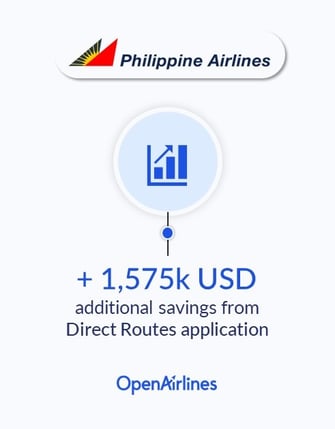Building the Business Case for AID & In-flight Connectivity
The aviation industry faces soaring fuel prices and the pressing call to swiftly decarbonize their operations. Operators are thus constantly searching for new techniques to reduce fuel usage and boost their fuel programs. One of the areas airline professionals investigate to improve performance is in-flight operations.
Integrating Aircraft Interface Devices (AID) and in-flight connectivity yields huge operational improvements that can benefit all stakeholders of commercial air transport (airlines, ATC, passengers, or other airline customers). However, many airline professionals worldwide face challenges in justifying investments in these technologies and securing management buy-in.
This article dives into the power of AIDs and in-flight connectivity while shedding light on airline professionals' challenges in building the business case for their adoption. We'll explore strategies to overcome these hurdles and help airlines develop this crucial topic forward.
|
Summary |
Understanding the value of AID & In-flight Connectivity.
What is an Aircraft Interface Device?
Aircraft Interface Devices (AID) are avionics hardware parts that allow connecting an Electronic Flight Bag (EFB) to the aircraft systems. AIDs allow EFB devices or other systems to access flight information directly from the avionics systems. AIDs are also a gateway to all the connectivity channels of the aircraft and sometimes can offer additional connectivity channels.

Nowadays, most AIDs only enable sharing information one way: AID to EFB.
What is In-flight connectivity?
In-flight connectivity refers to the capability of the crew to access internet services and communication platforms while in the air, typically facilitated through satellite-based or air-to-ground communication systems integrated into the aircraft's avionics.
The benefits and opportunities of AID and In-flight connectivity.
AID and in-flight connectivity open a whole new range of possibilities for flight operations and, moreover, combined. Its potential ranges from efficiency to safety to even passenger experience. It yields such big potential that it is widely agreed in the industry that the next generation of optimization improvements will come from new technologies and an operational ecosystem connected live.With AIDs, avionics data can be used directly by EFB solutions and contribute to reducing the workload for pilots as they do not have to input the data into their tools anymore. This also opens new horizons for onboard operations where EFB solutions like SkyBreathe ® OnBoard can continuously assist the pilot with suggestions on actions to take based on the real-time flight situation.
AIDs and in-flight connectivity also help break silos between the flight deck and the ground by streaming aircraft information to the ground or by getting updated data from the ground while in-flight.
Flight operations teams naturally recognize these technologies' potential benefits and opportunities. The most advanced airlines worldwide are also starting to reap the first fruit of the revolution that AIDs and in-flight connectivity are bringing, which only makes flight operations teams more interested and excited about the subject.
Challenges airlines face to equip aircraft with AID and In-flight Connectivity technologies.
Despite all the possibilities that AIDs and in-flight connectivity unlock, airline professionals like flight operators often face serious difficulties in building a business case to get equipped with these technologies. Upgrading an airline fleet with AIDs or in-flight connectivity systems is a lengthy project with important costs
Airline professionals wanting to drive these changes must build a strong business case they trust to justify the equipment. In fact, airline participants at the latest EFB users forum in Prague have massively reported that this business case was very hard to build.
Related content >> Highlights from the Electronic Flight Bag (EFB) Users Forum 2023
Let’s take a closer look at the main difficulties that airlines face regarding this topic:
Facing high initial investment costs.
Implementing AIDs and in-flight connectivity systems requires significant financial resources, posing a challenge for airlines with short-term challenges to keep flying and being profitable.Acknowledging there are no immediate cost savings.
Fleet modifications themselves do not inherently generate savings. AIDs and in-flight connectivity enable EFB applications or other systems to bring operational improvements, needing collaboration with additional parties and increasing project complexity.
Understanding the complexity of fleet modification.
The intricate nature of modifying aircraft fleets introduces operational risks.Choosing the right solution.
The multitude of solutions available in the market complicates airlines' decision-making process. Additionally, integrating third-party solutions adds complexity, as evaluating and comparing options becomes more challenging.
Managing regulatory compliance processes.
Lengthy and complex regulatory compliance processes, particularly in assessing and managing cybersecurity threats, add a layer to the complexities and timeframes associated with AID and in-flight connectivity projects.
Conducting solutions trials.
Even on a small part of the fleet, trials can be cumbersome and resource-intensive. Selecting a solution to test, getting ready for testing, and testing already constitutes a significant project and demands substantial commitment from the airline.
As we pinpointed, airline professionals face many challenges when advocating for connectivity. Nevertheless, there are some practical strategies to overcome these hurdles and gain management backing, moving forward on this paramount issue.
4 tips to build a Business Case to equip aircraft with AID & In-flight connectivity.
1. Focus on a few specific use cases to build the foundation.
When developing the business case for AID and in-flight connectivity, it's better to concentrate on a few concrete use cases. Attempting to incorporate too many solutions simultaneously can be tempting because so many doors are open, but in the end, it would just dilute the focus and add complexity to the proposal.
By narrowing the scope to key use cases, airlines can establish a solid foundation for the business case, allowing for clearer communication and more effective analysis of potential benefits. Some use case examples, among other possibilities, are Taxi optimization, Direct routes usage, or even Flight Profiles Optimization.
This focused approach also helps avoid spreading resources too thinly across multiple initiatives and ensures that efforts are directed toward the most impactful and achievable outcomes.
2. Prioritize solutions with quick results.
Focusing on solutions that promise rapid results and scalability is crucial for bolstering the credibility of the business case for AID and in-flight connectivity. The advantages of prioritizing initiatives with quick wins include the following: - Demonstrable impact and enhanced stakeholder buy-in: Solutions that deliver quick results provide tangible benefits early in the implementation process, instilling stakeholder confidence and driving continued investment and expansion of AID and in-flight connectivity technologies.
- Risk mitigation: Rapidly deployable solutions typically have lower implementation risks, reducing uncertainties associated with lengthy projects and ensuring smoother adoption.
- Scalability and Flexibility: Prioritizing scalable solutions allows for incremental improvements and adjustments as needs evolve, ensuring adaptability and long-term success.
Concentrating on solutions that provide immediate advantages without significant infrastructure enhancements or connectivity can be a tactical approach for airlines seeking to enhance their fuel programs.
Take SkyBreathe® OnBoard. This EFB app has the flexibility to expand in tandem with an airline's technological advancements, guaranteeing that investments made in the tool yield value throughout every phase of connectivity integration.

For example, SkyBreathe® OnBoard's Direct Assistant delivers timely notifications on shortcut opportunities using AID and in-flight connectivity.
Using the Direct Assistant can double the application rate of direct routes and save up to 60,000 kg of fuel per aircraft per year for a single-aisle plane.
This phased approach sets the stage for good implementation and long-term success in leveraging AID and in-flight connectivity technologies.
Related content >> How to get started with EFB connectivity
3. Leverage peers' success stories.
Drawing on successful case studies from other airlines and technology providers can share valuable insights and bolster the credibility of the business case. These stories are often shared in conferences, specialized press, social networks, and company communications, offering valuable benchmarks and guidance for identifying suitable use cases.
Pro tip: Try to choose success stories from airlines with similar goals and conditions.
4. Use effective communication and engagement techniques.
General best practices for compelling business cases, such as effective communication and stakeholder engagement, also apply to AID and in-flight connectivity initiatives. Strategies may include data visualization and storytelling techniques to effectively articulate the benefits and opportunities.
To sum up
Aircraft Interface Devices (AID) and in-flight connectivity hold significant potential for improving flight operations, and airlines worldwide are aware of that. Despite some obstacles, airline professionals can employ effective strategies to build a compelling business case for AID and in-flight connectivity adoption, such as prioritizing solutions with quick results that can grow with the airline ecosystem, like SkyBreathe® OnBoard.
Save fuel, save money, save the planet!
WANT TO LEARN MORE?
Discover more fuel-saving practices to apply during each phase of a flight >> Download the infographic




